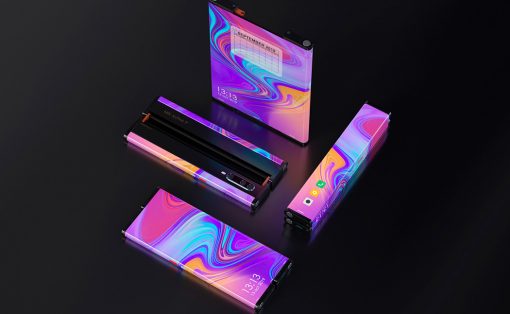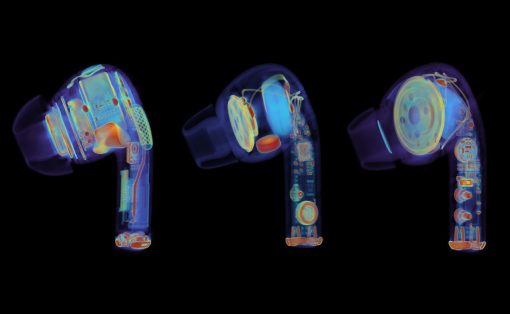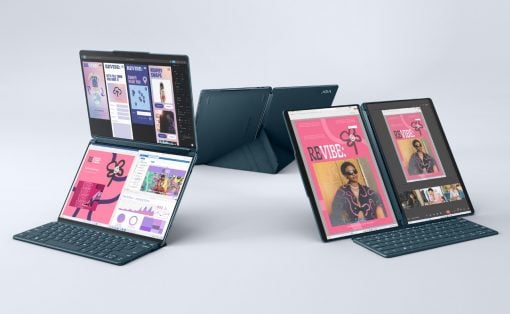The idea of being an Apple or Android superfan made a lot of sense 10 years ago when there were substantial differences between the two brands. Today, the two operating systems share an entire host of similarities. Both have overlapping features that make them compelling alternatives to each other, and the only truly defining difference at this point is their individual ecosystems or walled gardens… that was until today when Google revealed their Pixel 8 and Pixel 8 Pro.
While outwardly, the Pixel 8 series and the iPhone 15 series share a ton of pretty great features, it’s remarkable what Google’s managed to achieve with its AI-first approach. Both phones run on custom silicon (the iPhone on the A17 Bionic chip and the Pixel on the Tensor 3 chip), but Google’s strong AI background has resulted in a few surprising new features that set it in a class apart. These features are so game-changing that not only are they not available on any other Android phone, but you won’t find them even on the iPhone 15 Pro Max.
![]()
![]()
Temperature Sensor
The first on this list isn’t an AI-powered feature but rather a hardware one… and a pretty funky one to begin with. The Pixel 8 Pro is the first Pixel phone to come with its own temperature sensor that measures the temperature of anything you point it at. Almost working like an IR thermometer, this sensor lets you see if your drink’s chilled or if your barbecue grill or cast iron is ripping hot. You can measure the outer temperature of food items to know if they’re cooked properly or if your coffee is too hot for consumption. Google has even filed an application with the FDA to allow the sensor to monitor human temperature data, allowing you to check if you have a fever, and sync that data with your fitness device. The temperature sensor on the Pixel 8 Pro is mirrored by a LiDAR sensor on the iPhone 15 Pro, which performs 3D scanning rather than temperature gauging. Sure, they don’t compare given how wildly different they are, but one could argue that the ability to instantly measure the temperature of anything has much more of a real-world impact than the ability to 3D scan.
Best Take
Last year, Google unveiled some pretty impressive AI-powered editing features within its Photos app, like the ability to unblur photos, to erase objects you didn’t need, and to move certain elements within the photo for a better composition… but what do you do when you click a group photo at the wrong moment when someone’s eyes are closed, or a family photo with the kid making faces while everyone says cheese? Best Take is Google’s answer to that unique problem – if you’re unhappy with someone’s expression in a photo, Best Take simply changes their expression for you. The camera records facial expressions long before you hit the shutter button, giving you multiple options to choose from. The AI simply replaces the ‘bad’ face with a better one, resulting in a computationally altered photo that looks much more appealing. In Google’s words, it replaces the photo you just clicked with the photo you wish you clicked.
This feature, although highly impressive, has a lot of people up in arms because it destroys the very concept of a photograph. Most purists will argue that such a high level of editing pretty much takes away the true beauty of a photograph because it completely alters reality. There’s a significant difference between altering a photo’s white balance and flat-out changing someone’s face… but that vitriolic debate aside, the Pixel 8 and 8 Pro both tout this rather incredible feature that isn’t just missing on the iPhone, it’s probably against the very belief system of the people at Apple.
Audio Magic Eraser
If last year’s magic eraser for photos wasn’t good enough, Google debuted a new Audio Magic Eraser feature for video too! Sort of like noise canceling for videos, the new Audio Magic Eraser feature lets you edit the audio in the video files captured on your phone. Tensor’s powerful AI analyzes the audio and separates the waveforms into multiple categories that you can then either mute or reduce. Recording a vlog on a noisy road? The AI can eliminate the car and crowd noises and keep just your voice (without any fancy microphone or equipment). Trying to sing a song and your dog’s barking away in the background? You can mute your dog entirely in post by simply ‘erasing’ that sound from the overall video! The Audio Magic Eraser is a brilliant example of how far Google’s come with its AI endeavors, and is a major sign for Apple and other companies to jump aboard the AI train.
![]()
Video Boost and Night Sight Video
Google’s made some massive improvements to the Pixel’s video-shooting abilities too. The iPhone has somewhat been a bit of an undisputed champion in the video department, but the Pixel 8 Pro’s latest features fire direct shots at Apple. Video Boost is Google’s latest feature for enhancing videos AFTER you’ve shot them. Sort of like how photos get computationally enhanced after you click the shutter button, Google now extends this feature to videos too, processing every single frame individually to tweak the colors, highlight the skin tone, enhance HDRI, and make the output much more vibrant and beautiful than the original footage. Video Boost works retroactively, but only if you’ve got the feature enabled before you shoot your video. Once shot, the video is sent to Google’s cloud servers to process, and then the boosted video is sent back to your phone, available directly in the Photos library.
Enable Video Boost in a low-light environment and you instantly get access to Google’s new Night Sight Video feature. Night sight, whether on Android or iOS, has been limited to photos, but what Google proposes is literally mind-boggling. Just like Video Boost, Night Sight Video enhances every single frame of your low-light video file, enriching it and bringing out details that were previously hidden in the darkness. I imagine somewhere an Apple exec is furious at the fact that the Pixel 8 can now record low-light videos, because after its astrophotography mode, this is yet another significant win for Google over Apple!
![]()
Zoom Enhance
If you don’t have upwards of $1,099 to spend on the iPhone 15 Pro Max’s tetraprism camera that shoots 5x optical zoom, this new feature for Pixel phones should impress you. Announced alongside the new Pixel 8 phones, Zoom Enhance is a feature within Google Photos that uses AI to upscale your photos for you. The feature, on its own, might not sound as revolutionary as the Audio Magic Eraser, but it’s the first time a smartphone’s had a generative AI upscaler built right into it. Just pinch to zoom into an existing photo and you’ve now got the option to enhance it using generative AI upscaling technology that felt like science fiction just a few years ago. What’s truly impressive is that the Zoom Enhance feature runs on-device and doesn’t need to use a massive cloud-based AI model. This on-device foundation model is specific to the Tensor 3 chip, and although the Zoom Enhance feature isn’t available immediately, Google promised to roll it out later this year.
![]()
Recorder Transcribe + Summarize
Another feature powered by the Pixel’s on-device foundational model is its ability to transcribe and summarize your recordings. Google did announce a Live Transcribe app over 5 years ago, but with the birth of LLMs, the new Recorder is a pretty potent tool that takes the effort out of transcribing all your recordings. It works off the bat, without needing a separate subscription to an AI service. Just hit the record button and the phone creates an audio recording while simultaneously transcribing every recording into an in-depth text file. A summarize button helps condense the entire transcription into actionable pointers. The service runs locally, is free, and makes a strong case for why anyone should choose a Pixel 8 over an iPhone 15.
Call Screen
The Pixel’s impressive AI model also helps sort robocalls from real ones with stunning accuracy. Hit the Call Screen button when your phone rings and the phone’s AI ‘chats’ with the caller to identify the purpose of their call. If it’s spam, the Pixel 8 automatically declines the call for you without you needing to answer, but if it’s important, you can either answer the call or get the AI to respond for you. Perfect for calls that just need small actions from you, the Call Screen feature lets you quickly go about your business instead of being on a call that takes minutes when it should have taken seconds. The Call Screen feature is touted to even work on the Pixel Watch when connected to a Pixel phone.
![]()
7 Years of Software Updates (Bonus)
Rick Osterloh also made a pretty surprising announcement at the end of the keynote, stating that the Pixel 8 and 8 Pro would get a whopping 7 years of software updates to keep them running for longer. Most phones get 3 years of updates, the iPhone gets 5, but 7 years is pretty unprecedented for any smartphone. It shows that Google is (at least on paper) serious about what the Pixel means to them and that they want consumers to benefit from it for as long as possible. It also means people will hold onto their Pixel phones for longer, hopefully reducing e-waste and Google’s carbon footprint significantly. Sure, Apple’s got its Carbon Neutral program… but let me know when they offer software support for their iPhones for more than half a decade!
![]()






